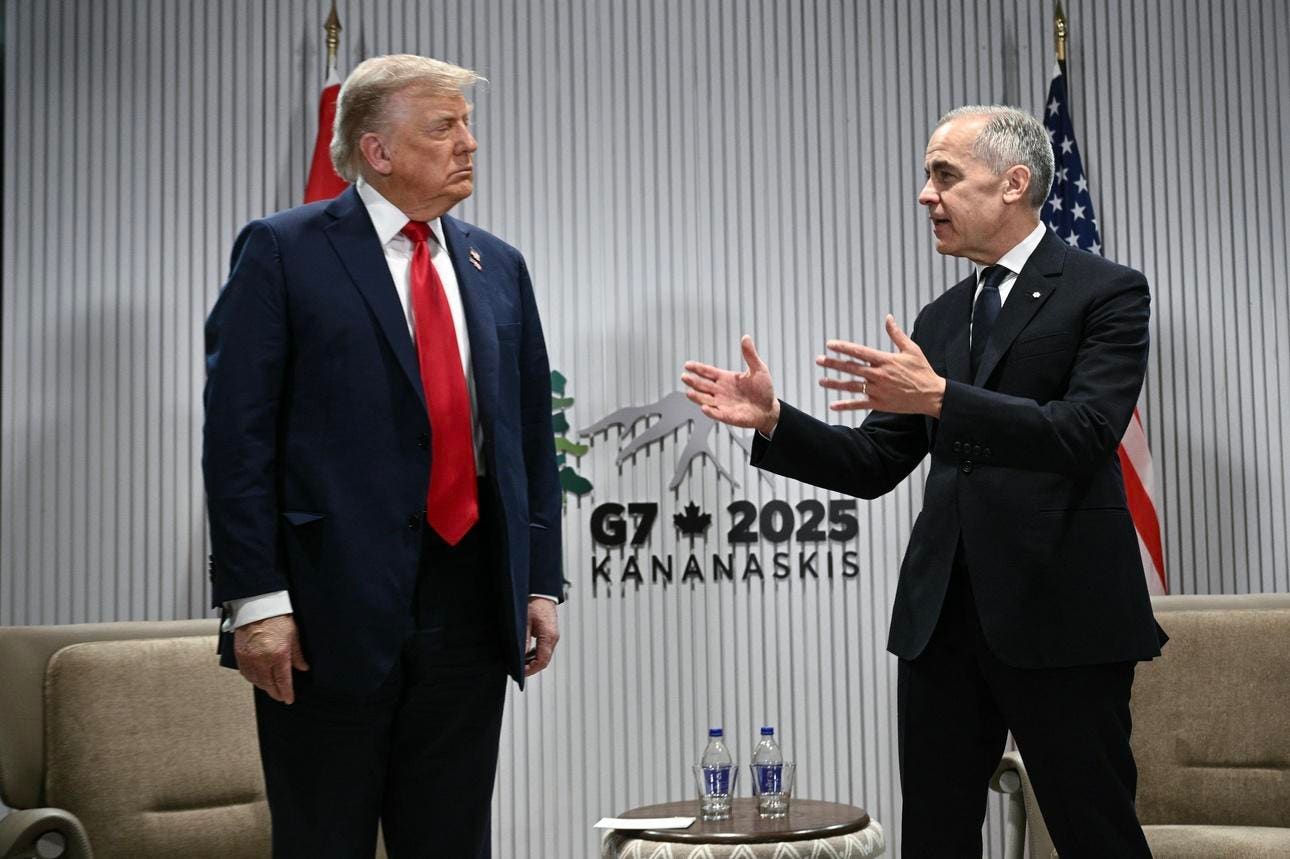Topline
President Donald Trump on Thursday announced that he will impose a 35% tariff on goods imported from Canada starting August 1, and said he will raise the baseline tariffs on all trading partners from his previously announced 10% to 15-20% as he dismissed concerns about the impact of his levies on inflation and stock market.
US President Donald Trump sent a letter to Canadian Prime Minister Mark Carney informing him of the … More
Key Facts
In a post on Truth Social, Trump shared a letter addressed to Canadian Prime Minister Mark Carney informing him about the 35% tariff, which is an increase from the 25% levy Trump had first imposed on Canada in March.
The 35% rate will also apply to Canadian goods “transshipped” via another country but it is separate from any sector specific tariffs announced by Trump.
In an interview with NBC News on Thursday night, Trump also suggested he is preparing to raise the baseline tariff level on all imports from 10% to around 15-20%.
“We’re just going to say all of the remaining countries are going to pay, whether it’s 20% or 15%…We’ll work that out now,” the president told NBC News.
Trump appeared to downplay the impact to tariffs on the economy and said he thinks they have been “very well-received,” pointing to the stock market hitting new record highs on Thursday—although futures indexes have slipped since the tariff comments.
What Did Trump’s Letter Tell Canadian Authorities?
In the letter to Carney, Trump blamed “Canada’s failure to stop the drugs from pouring into our Country” as the reason for his first round of tariffs against the country and said, “Instead of working with the United States, Canada retaliated with its own Tariffs.” Trump’s then warned that if Canada “for any reason” raises its tariffs on U.S. goods in retaliation this time, “whatever the number you choose to raise them by,” will be added to the 35%. Aside from the alleged fentanyl flow, Trump also blamed the steep levy on Canada’s tariff and non-tariff policies and trade barriers, and wrote that the U.S.’s trade deficit with Canada was a threat to the U.S. economy and National Security. The president ended his letter saying that he will consider adjusting the tariff rate if Canada works with him to “stop the flow of Fentanyl,” and they may be “modified, upward or downward” based on the country’s relationship with the U.S.
How Have Canadian Authorities Reacted?
In a statement on social media after Trump’s letter, Carney wrote: “Throughout the current trade negotiations with the United States, the Canadian government has steadfastly defended our workers and businesses. We will continue to do so as we work towards the revised deadline of August 1.” He added that Canada has made “vital progress to stop the scourge of fentanyl in North America,” an it intends to continue to working with the U.S. on this matter. He then talked about efforts to grow the Canadian economy through a slate of “major new projects in the national interest,” and added “We are strengthening our trading partnerships throughout the world.”
What Do We Know About The Flow Of Fentanyl From Canada?
Despite Trump’s allegation that Canada was allowing large quantities of fentanyl to flow into the U.S., data shows that only a minor fraction of the fentanyl seized by border authorities in the last few years was from Canada. According to Customs and Border Patrol data, 72,087 lbs of fentanyl were seized by the agency between 2022 and June 4, 2025. During this period, only 117.19 lbs of the synthetic opioid were seized along the Northern border, accounting for around 0.16% of all fentanyl seizures. The Canadian government has also highlighted this data, and said it “has increased its focus on fentanyl law enforcement, leading to the seizure of 101.8lbs and 15,765 pills of fentanyl and other synthetic opioids.” The Canadian government also notes that its “Fentanyl Czar” is “actively and deeply engaged with U.S. counterparts, as both countries continue their close cooperation in dismantling criminal networks and eliminating the flow of fentanyl.”
Further Reading
Trump’s New Tariffs Could Cost Households $2,400 This Year, Analysis Finds (Forbes)
Trump Extends ‘Liberation Day’ Tariff Delay As He Rolls Out New Rates On 14 Countries (Forbes)
Trump Slaps Brazil With 50% Tariff While Criticizing Prosecution Of Former President (Forbes)



